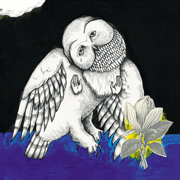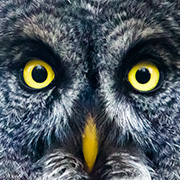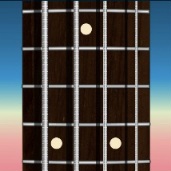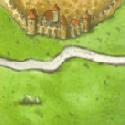|
You might check out Tufted Titmouse too- pretty often when there's a woodland bird song I can't identify it ends up being a titmouse. e: new page- Saw a new bird last week- Dusky Grouse.  Sinks Canyon Dusky Grouse 1628 on Flickr Sinks Canyon Dusky Grouse 1628 on FlickrMale grouse get all the attention, but I think female grouse are the bees knees. On the same hike Townsend's Solitaire 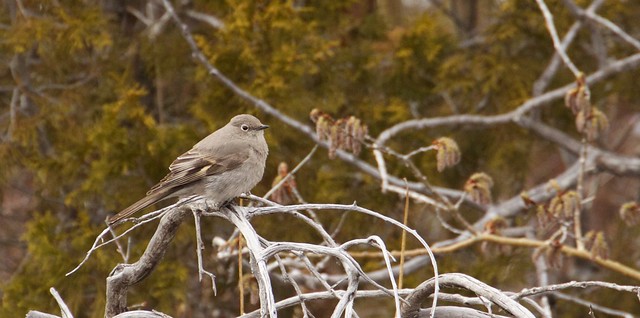 Sinks Canyon Solitaire 1627 on Flickr Sinks Canyon Solitaire 1627 on FlickrCanyon Wren 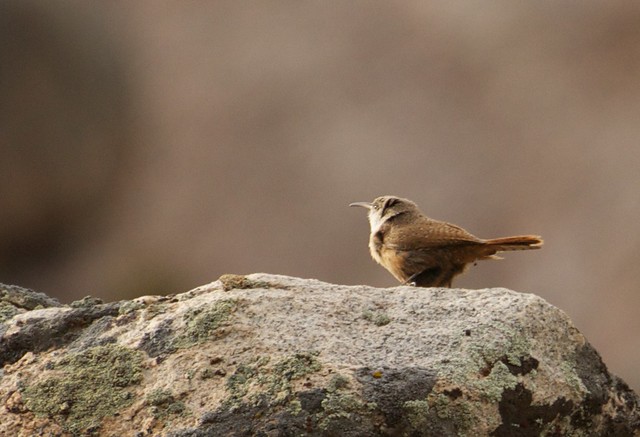 Sinks Canyon Canyon Wren 1648 on Flickr Sinks Canyon Canyon Wren 1648 on Flickr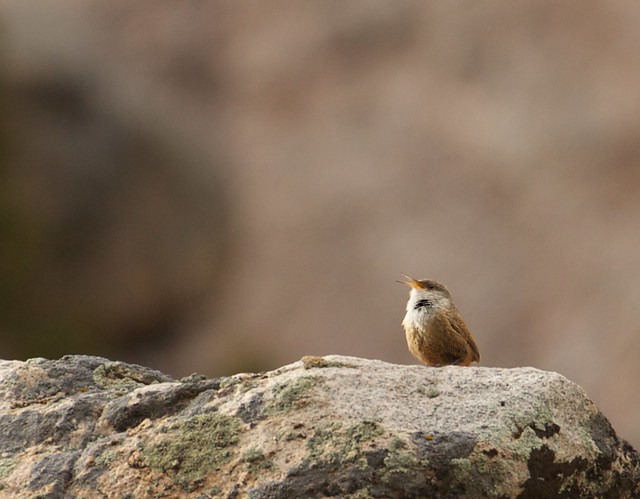 Sinks Canyon Canyon Wren 1649 on Flickr Sinks Canyon Canyon Wren 1649 on Flickr
BetterLekNextTime fucked around with this message at 03:14 on May 7, 2014 |
|
|
|

|
| # ? Apr 29, 2024 08:37 |
|
I saw this little (sparrow-sized) fella while out on a walk and can't identify it. The combination of the white throat patch, yellow head stripe and the splash of yellow next to the black/white striped breast seems like it would be distinctive, but I'm drawing a blank. I'm guessing it might be a yellow-rumped warbler? This is up in Edmonton, Alberta.
Issar fucked around with this message at 04:52 on May 9, 2014 |
|
|
|
Yes, I'd say Yellow-Rumped Warbler, Myrtle's subspecies.
|
|
|
|
I'm in Fargo this week, as I mentioned earlier, and the birding has been insane at times. Tuesday was amazing. In one morning I saw as many warbler species in one park as were seen in my home state last year (and we didn't even see a Waterthrush). Not quite as good as further east would be, but still pretty awesome. Sadly, no new push of birds since then so things have thinned out and I'm still missing some target birds, but its been pretty awesome.
|
|
|
|
I saw my first definite Yellow Warbler today (my first I'm-sure-that's-a-warbler-and-I'm-sure-about-the-species), and it was showing some really interesting behaviour - bouncing around from branch to branch in a Siberian Elm, but pausing to splay out his tail and hold his wings partly out so he looked wide. Lots of noise, movement, and apparently trying to look big. We saw a chipmunk in the same tree, eating seeds and generally ignoring the warbler - was this warbler trying to drive away the chipmunk? I know squirrels are predators of songbird nests, do chipmunks go for eggs, too?
|
|
|
|
Worse than than, chipmunks have been observed to attack songirds at feeders and eat their brains. They'll eat mouse brains too. This created quite a fuss at a nature center I used to frequent in Delaware until the naturalist assured everyone that it's normal behavior and they are not zombie chipmunks.
|
|
|
|
Just got back from a work trip to North Carolina. The last month has been probably the best birding month of my life. Take a look at my life list from eBird since 5/15:code:If you live in the eastern half of the US I know many of those are pretty laughable (I should've gotten Eastern Meadowlark several times over by now) but a lot of those birds are species I stared at in field guides and could barely believe existed so it has been pretty awesome to finally see them. I'm birded out (and I worked 100 hours last week as well), but I am headed out tomorrow a birding conference where I have a shot at up to four more life birds. BeastOfExmoor fucked around with this message at 16:39 on Jun 11, 2014 |
|
|
|
Nice! Yeah hard to beat spring in the east. Haven't been back this time of year for too long. This won't be for a while, but I'm going to get to join a research team on the north slope of Alaska in late August. Not sure whether to expect any lifers but it's been 15 years since I've been to Alaska and I'll have a much better camera kit than I did then, so pretty psyched! Also, apparently I'll miss the worst of the mosquito season which is cool.
|
|
|
|
Walking down the hall to the water fountains I noticed a couple of black-billed magpies (Pica pica hudsonica if you're a lumper, or Pica hudsonica if you're a splitter) in the middle of the road outside, picking at what looked like small roadkill. I grabbed my camera and headed out to try to grab a photo. By the time I got out there (30 seconds?) a crow (Corvus brachyrhynchos) had shown up and the magpies were hiding out under a nearby small spruce tree. I thought this was really interesting behaviour because for the last few weeks I've been watching solitary crows lose fights against pairs or triplets of magpies. A crow is a little bigger than a magpie, but the magpies are very aggressive - a few weeks ago I saw a magpie fly across the large grass lawn in the middle of campus (maybe 100 metres wide) at a height of about 1 metre, straight and fast, right at a crow that was, to my eye, just sitting there. I've seen lots of similar behaviour from the magpies, basically they act like they all have a wild burning hatred of all crows and attack on sight. Then this pair of magpies abandoned a squashed gopher (almost certainly Richardson's Ground Squirrel, Urocitellus richardsonii) when one crow simply showed up. The crow never closed its mouth except when swallowing chunky-stringy bits (mmmm... roadkill...), which I took for a kind of aggressive "Don't gently caress with me!" posture. And the magpies only really called to each other, after the crow took off with most of the carcass. Also people-watching - most of the cars took care to avoid the roadkill if there was a bird (crow or magpie) at it, though when the bird retreated to the side of the road, subsequent cars would run over it. I've heard a few people complain about crows and/or magpies, but the dozen or so drivers I saw all avoided the birds. Anyway, this thread has been pretty quiet lately and I felt like talking about this little bit of bird behaviour. It's summer here in the Northern hemisphere and there are lots of birds around - what are people up to?
|
|
|
|
Bumping this thread cause I'd like some help identifying this guy here (it was very dark, so the pics are auto-enhanced):   My fiance and I spotted him on someone's lawn, having just killed a smaller bird, and he then flew into a tree and had a leisurely dinner. So leisurely that we had time to run home, grab the camera, realize the battery was not in the camera, get the battery, and come back before he was finished. I know I appreciated his patience.  Based on a bit of research, I'm leaning towards Sharp-Shinned Hawk, as he seems roughly crow-sized, definitely not big enough to be a Red-Tailed. It's possible he could be a Cooper's Hawk, but his spindly little chicken legs and smaller head have me leaning Sharp-Shinned. I've got a few more pics, mostly side profile, if needed.
|
|
|
|
Panic Restaurant posted:Bumping this thread cause I'd like some help identifying this guy here (it was very dark, so the pics are auto-enhanced): Probably a Sharpie, but they can be pretty tough in the field to differentiate from a Cooper's. If you have some pictures of the banding at the tip of the tail that may help.
|
|
|
|
It's been revealed that a pair of European Bee-eaters have breed on the south coast of England. They're only known to have successfully done so twice before (1955, 2002). I'm not sure I could come up with a 'edge of range' species I'd more like to see expand permanently in to the UK. http://markavery.info/2014/07/28/beeeaters-iow/
|
|
|
|
So I leave my house the other day (to go birding, ironically enough) and I hear a catbird, robin, and some others freaking the gently caress out over something. I look to my right, and who do I see but this smug fucker: Not sure if it's the same individual I posted earlier (though I have a gut feeling that it is), but it's definitely the same species! Still going with Sharp-Shinned unless anyone notices something obvious I missed! It's cool as hell to see him in my yard, but I think I'm going to leave my suet feeders empty for a few days so he doesn't murder everyone.
|
|
|
|
Panic Restaurant posted:It's cool as hell to see him in my yard, but I think I'm going to leave my suet feeders empty for a few days so he doesn't murder everyone. Might I suggest doubling the number of feeders instead?  More chances to get awesome pictures, perhaps even some action shots. More chances to get awesome pictures, perhaps even some action shots.
|
|
|
|
H110Hawk posted:Might I suggest doubling the number of feeders instead? I would be all for this if there was some way to get him to eat ONLY the grackles and starlings, haha.
|
|
|
|
I might actually lean towards Cooper's on that hawk, but I'm not an expert.
|
|
|
|
BetterLekNextTime posted:I might actually lean towards Cooper's on that hawk, but I'm not an expert. There's a small flock of Wilson's Phalaropes migrating through my area now, which is a lifer for me. I'm hoping for some good filming conditions before they leave town, but it looks like it's going to be mostly overcast for the next week.  phalarope-tongue by Redwood Planet, on Flickr  phalarope-nibble by Redwood Planet, on Flickr
|
|
|
|
Moon Potato posted:That's my guess too, going by the shape of the head and the position of the eyes. The ones I've seen in my area have been pretty easy to differentiate, but there is some overlap in size and plumage can be very similar between the two. This is a helpful guide: http://feederwatch.org/learn/tricky-bird-ids/coopers-hawk-and-sharp-shinned-hawk/ Yep, I even posted the pic to Audubon NY's Facebook page and they agreed: Cooper's Hawk! Guess that settles that then, mystery solved! On another note, I was thinking about picking up the new Sibley guide, but a bunch of Amazon reviews are claiming they hosed up the current print run and I should wait for new batch in September, can anyone confirm?
|
|
|
|
I'm by no means an expert but I asked the same question in the bird photos thread and the conclusion is that there is one bird that's too dark, but the rest are fine. I since bought the book and it's good so far, and I have two of his other books for comparison.
|
|
|
|
In my mind the issues are pretty minor. The Scarlet Tanager is a little dark. A few others are a little off, but nothing that would effect the ID. The other complaint is that some of the text is a little small and light which is hard on some people's eyes. Overall it's a huge a huge improvement on the older edition. I don't regret buying it at all. New edition is scheduled for November from what I hear.
|
|
|
|
The examples of birds in flight and from different angles makes the new Sibley's worth the upgrade imo.
|
|
|
|
Man, the great thing about being still relatively new to birding, is that almost every trip gets me a lifer. I got four this weekend. Nothing crazy, but all new to me! I especially liked the bluegray gnatcatcher. What a fun little bird!
|
|
|
|
Couple of ID requests. These are all from central Alberta, Canada: I believe this to be a Hudsonian Godwit, since he was standing beside a Marbled Godwit and the two looked completely different, and nothing else seems to match around here.  Is there a way to tell a juvi California Gull from a juvi Herring Gull? I thought the black beak was the deciding feature but then I found a picture of a black-beaked juvi California Gull in my Gull guide (Peterson's). I hate juvi bird IDs. 
|
|
|
|
InternetJunky posted:Couple of ID requests. These are all from central Alberta, Canada: I would say that definitely looks like a Hudsonian Godwit to me. Absolutely not a Marbled. In flight the difference is pretty obvious with the Hudsonian having an obvious white rump. Your gull... Juveniles are hard. The new Sibley's says of juvenile California Gulls, "bill pink-based by Oct." My hunch is California, but its just a hunch. Head looks small, primaries look long, bill looks short. I haven't had any first hand experience with juv Herring Gulls though so grain of salt and all..
|
|
|
|
I'm an absolute beginner with birding, it is something I like to do while doing other outdoor activities such as hiking and canoeing. I am slowly learning how to identify different bird species. During a recent 4 day canoe trip in Wisconsin on the Wis. river my wife and I saw many different types of birds that we have never seen before. What I thought was really awesome was the large amount of Sandhill cranes that was in the area. On our second night camping we were next to an island that had over 20 of them hanging out.  I have only seen Bald Eagles in the wild one other time so this was very cool for me. It was crazy how many of them were around.  
|
|
|
|
Hey thread. I've been seeing a lot of injured great blue herons in my city's bird sanctuary. Is it common for herons to have wounds on their neck? I sighted one two weeks ago with a huge bleeding wound right below its head. Today I saw one with a less severe wound in the same area. I really hope it was the same bird getting better. I got close to another heron with a really badly fractured leg. I doubt he has many days left. 
|
|
|
|
I just saw a new (to me) bird and I've done a little research to try and name it. I have concluded that it was likely a Golden Eagle or a Juvenile Bald Eagle, but both of these species don't stay as far south as Ithaca, NY in the summer according to those links! I have seen this bird a couple of times but they are very brief spots, so it is tough to distinguish it visually. And it hasn't made any noise. What are some more advanced methods I could use to differentiate between these two species? It seems like I should be able to rule out (or not) a juvenile species based on the time of year, but I am not sure where to go for a source on that kind of information. Edit: I got a good look at its belly and I think there was too much white for it to be a golden eagle based on this information. Neat! Corla Plankun fucked around with this message at 16:34 on Aug 18, 2014 |
|
|
|
Corla Plankun posted:I just saw a new (to me) bird and I've done a little research to try and name it. I have concluded that it was likely a Golden Eagle or a Juvenile Bald Eagle, but both of these species don't stay as far south as Ithaca, NY in the summer according to those links! I think it's too early for golden eagles, and although it could be a baldy, if you didn't get a good look at its head, it could be a turkey vulture. I saw a HUGE bird recently that made me immediately think "eagle" having seen baldies on the west coast, but subsequently turned out to be a turkey vulture (not a bird I'm familiar with, though I've seen a whole bunch very recently so I guess now I am). If it had a lot of pale on its underside and was mahooosive, that would be my first guess (I'm in Toronto so not too far geographically from you).
|
|
|
|
Since seeing pictures of them in books as a kid, I've always loved kingfishers. I was absolutely thrilled to finally see a few this summer. They're such amazing little birds. I don't know why, but I assumed they would be much bigger. I had a strange couple of weeks trying to explain how seeing a bird could leave me with such a lasting sense of joy, but I think I managed to encourage some of my friends to take a bit more of an interest in birding.
|
|
|
|
Hello bird thread! I have a bird that keeps flying into my house (like, not into the walls but through the door). I've set him up in a box with some holes, a couple of branches for perches and some water. What the hell kind of bird is this? 
|
|
|
|
Antifreeze Head posted:Hello bird thread! That's a ground nesting warbler called an Ovenbird. Never heard of those going in people's houses! He'll probably want to migrate soon, and they migrate at night, so I'd get him outside ASAP (by the afternoon certainly) and he'll probably be OK.
|
|
|
|
BetterLekNextTime posted:...he'll probably be OK. He totally wasn't OK; died during that night. At least he went in a warm and dry place rather than out in the rain, I guess? Thanks for the response all the same.
|
|
|
|
Bird porn. Ugh, can I start a gofundme to fly me to Alaska next June? https://www.youtube.com/watch?v=4yyMEoqG0jA
|
|
|
|
I just got back from Point Pelee, Ontario. Holy Crap! I didn't know Blue Jays came in flocks! Safety in numbers I guess, because there were probably at least 50 or 60 Sharp Shinned hawks in the two days we were there, plus a handful of Coopers, Broad Wingeds, Merlins, Kestrels, Northern Harriers, maybe a Peregrine, at least one, possibly two Bald Eagles, and a mess of Turkey Vultures. Raptor migration is wonderfully visible from that spot! Most of the little birds were understandably keeping a low profile, but we did catch a few in the woods. The Monarch butterfly migration was really cool to witness too, it was like being in a butterfly house only outside, in the wild. Highly recommend the trip at some point whether fall or spring migration to anyone in Ontario or around the south side of Lake Erie too.
|
|
|
|
Antifreeze Head posted:He totally wasn't OK; died during that night. At least he went in a warm and dry place rather than out in the rain, I guess? I've had the same thing happen with a chicadee and also a sparrow before. It's sad, but what can ya do.
|
|
|
|
Over in the Bird Photography thread, there's been some discussion of interspecies aggression including Coots and Wood Ducks. I was going to post this there but there's no photo and this kind of discussion seems better suited to this thread. It took a bit of digging, but I found the evidence that shows American Coots, Fulica americana are indeed utter bastards that attack other waterbirds all the drat time. Dr. Brent Gurd completed his PhD at Simon Fraser University while I was in the middle of my Master's in the same department. He gave a talk one day about the patterns of aggression among waterbirds, related to their evolutionary relationships - he was chasing down an hypothesis about adaptive radiation among dabbling ducks. One of his observations was that the dabbling ducks form a hierarchy, with each species showing aggression mainly towards conspecifics, and to at most two other species. The top of the heirarchy (Northern Shovelers, if I remember correctly) never bother to beat on middle- or bottom-rung species like Teals or Widgeons. The stand-out exception was the American Coot, a right bastard that beats up every other bird on the pond.  This is panel B of figure 5-3 from his Dissertation (copyright Brent Gurd 2005, I don't actually have permission for this but I think it counts as fair use and appropriately referenced.) The relevant text from the figure caption is: quote:(B) Aggression involving Coots. Coots were more aggressive towards dabbling ducks (solid circles, solid line) than towards diving ducks (open circles, dashed line), but were rarely victims of aggression by ducks in either guild (solid triangles, dotted line). From memory (I haven't read his thesis), the underlying reason has to do with egg production and egg/hatchling survival and causes of mortality. Baby Coots die of starvation more often than do other waterbirds, and Coots lay up to 20 eggs each season, compared to around 6-10 for most ducks. So Coot parents go berserk to drive competitors for food (i.e. dabbling ducks) away to ensure their offspring can have enough food. They're just like every other hyperactive unreasonable parent, in other words.
|
|
|
|
ExecuDork posted:Over in the Bird Photography thread, there's been some discussion of interspecies aggression including Coots and Wood Ducks. I was going to post this there but there's no photo and this kind of discussion seems better suited to this thread. I've got very little experience with the American version, but the Eurasian Coots, from what I've seen, will be aggressive towards basically everything with wings. I've watched them chase off gulls twice their size just for standing on the wrong bit of dirt island. Their kick-fights amongst their own kind are pretty funny to watch as well. Less funny, as documented in Life of Birds, is how they attack their own chicks to weed out the weaker ones. e- https://www.youtube.com/watch?v=SIw46rzx1Bc&t=612s Finger Prince fucked around with this message at 00:37 on Oct 29, 2014 |
|
|
|
The real psycho of the bird world sounds like the Steamer Ducks.
|
|
|
|
ExecuDork posted:Coots. Does this vary depending on whether it's breeding season? I'm used to seeing coots in places where they're a winter resident (Oakland and Arcata, California), and they don't seem any more aggressive than the other waterfowl. In fact, they seem a bit more timid than the Mallards, teals and wigeons when a hawk or falcon makes a pass over the area. Right now, there are large flocks of coots commingling pretty peacefully with everything else at Arcata Marsh. 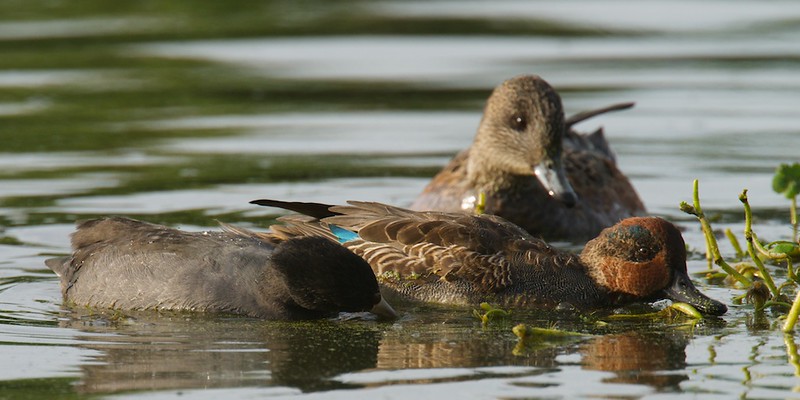 The exception to that was when a small group of Wood Ducks came though the marsh and were being pretty aggressive toward the other waterfowl. Here's the video that kicked the discussion off: https://www.youtube.com/watch?v=EsiviuJFxQM
|
|
|
|

|
| # ? Apr 29, 2024 08:37 |
|
Hey bird nerds, can I get some help on an ID? My friend sent me this picture asking if I knew what sort of bird it was. It was taken in a backyard on Long Island, New York. The closest I've looked at is a Cassin's Vireo, but that would be way out of range. Nashville Warbler is close, too, but this bird has a more distinct white eye/face region and the white outline on the wing feathers (I don't know the proper term for this, lacing?) I asked him how it was behaving, but he didn't remember anything or take notice. Sorry if this isn't a lot to go on. I'm only just trying my hand at the bird thing, really. It could be a juvenile something, but I don't know. (Sorry for the photo, it was taken through a window screen.)  Anyway, any help is appreciated! I can't wait to hear how easy this ID is and how I botched it up!
|
|
|





